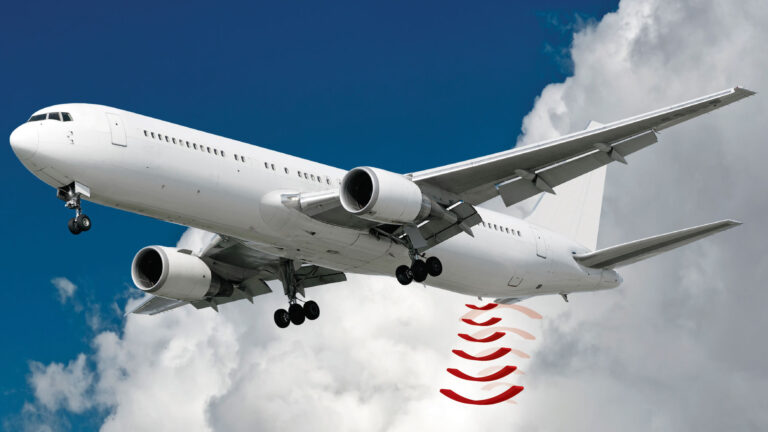5G
5G (5th generation) is the new global wireless standard after 1G, 2G, 3G, and 4G. It is designed to provide a faster connection for devices, objects, and machines.
5G provides higher multi-Gbps peak data speeds, ultra-low latency, more reliability, massive network capacity, increased availability, and a more uniform user experience to more users. Higher performance and improved efficiency empower new user experiences and connect new industries.

5G Troubles
Unlike its predecessors that were received positively by the market, 5G has been marred by controversy. Amid the covid-19 outbreak, some members of the public argued that 5G masts were used to accelerate the spread of the virus. While that’s a weird conspiracy, we can agree this is not the weirdest conspiracy that we have heard during the pandemic.
As major telecommunication companies roll out 5G in the US, concerns have been reported in various sectors and the aviation industry is the most affected.
In the lead-up to AT&T and Verizon’s launch of their improved 5G C-band equipment, it seemed like the sky was coming down.
In retrospect
The Federal Aviation Administration (FAA) and airline companies have had concerns about the impact of advanced wireless technologies on cellular devices for some time now. Meanwhile, the Federal Communication Commission (FCC) and telecommunication firms insist these technologies are safe – with their main argument being that 5G has been safely rolled out in many countries.
Even after the launch was delayed, carriers struck deals with the FCC to allow the rollout despite the risk of interfering with air travel and shipping. Consequently, several international airlines canceled flights to some specific US airports. However, after switching on the 5G C-band equipment, the delays and cancellations were fewer than predicted.
Notably, the FAA issued an order forbidding Boeing 747-8, 747-8F, and 777 airplanes from landing in airports where 5G interference is imminent.
Key issue
The fiasco revolves around a device referred to as a radar or radio altimeter that is fitted on every plane. The function of the altimeter is to provide readings of how far the plane is from the ground. The device is quite instrumental especially during bad weather when the pilot cannot see the ground.

Unlike older planes where the radar was an isolated component that a pilot would read and interpret, the altimeter in modern planes is a critical element as other systems like brakes and spoilers rely on its data. Ergo, any interference with the devices can be catastrophic to air travel.
The FAA has taken this matter seriously and implemented guidelines to deal with the situation. The regulator will clear specific models of altimeters to be used in planes landing in certain airports. It is noteworthy that the FAA will be evaluating clearances every month depending on how telcos roll out 5G.
By January 25th, the FAA attested that 90 percent of US commercial planes had been cleared to land at most US airports. The fast clearance rate has been key in preventing delays and cancellations.
Notwithstanding, almost half of the regional fleet has not been cleared leading to disruption in regional air travel and shipping. According to the Regional Airline Association (RAA), an organization that represents regional airlines that fly for United, Delta, American, and Alaska, the FAA may not take further measures like broadening buffer zones or reducing the strength of the 5G signal. That is to say, many planes used by regional airlines may not be permitted to land at some airports during bad weather. For instance, flights taking off or landing at Plane Field (an airport in Seattle, Washington) were canceled due to bad weather.
Altimeters are replaceable but the process is not a walk in the park. Even after an altimeter is certified for installation in a plane, approval for installation in a particular plane and its coherence with other components in the plane will determine whether the plane gets clearance from the FAA.
Alternatively, old radars can be enhanced to meet standards but still have to get approval from the regulator which may take a lot of time. The RAA argues that regional airlines spent millions of dollars to enhance the quality of altimeters and it is unfair that 5G had to undermine their operations.
Faye Malarkey Black the CEO of RAA has repeatedly called on the aviation and telecommunication companies to work together to ensure that the rollout does not disrupt air travel. Mr. Black reiterated that the collaboration between these two industries in other countries has mitigated interference and the same could be done in the US.
Apparently, AT&T and Verizon have set a deadline to remove buffer zones. The two telecommunication giants said that buffer zones will be eradicated in June this year if there is no tangible evidence to show real-world interference.
The deadline puts enormous pressure on the FAA. One way or another, the FAA and other stakeholders must find a way to address these concerns before the deadline. In fact, the deadline may compel action in the right direction.
Rapid Technological Advancement
Technology is collective in the way it affects corporations. Perhaps, telecommunication companies have a significant role to play as far as 5G is concerned. Nonetheless, electronics makes are already making 5G devices to leverage on its benefits. Therefore, it is absurd to expect carriers to delay the rollout.
Quick adaptability to technological advancements is crucial in the 21st century. Anyhow, airline firms have to eventually make the necessary changes to accommodate 5G and future technologies. The government and the private sector ought to work together to ensure that new technologies do not elevate some businesses at the expense of others. Although this may be practically difficult, early testing and collaboration can be crucial especially where technologies disrupt entire industries.

Do you think we moved to 5G too fast? Leave a comment below.


Good one
Thank you. Stay with us for amazing stuff